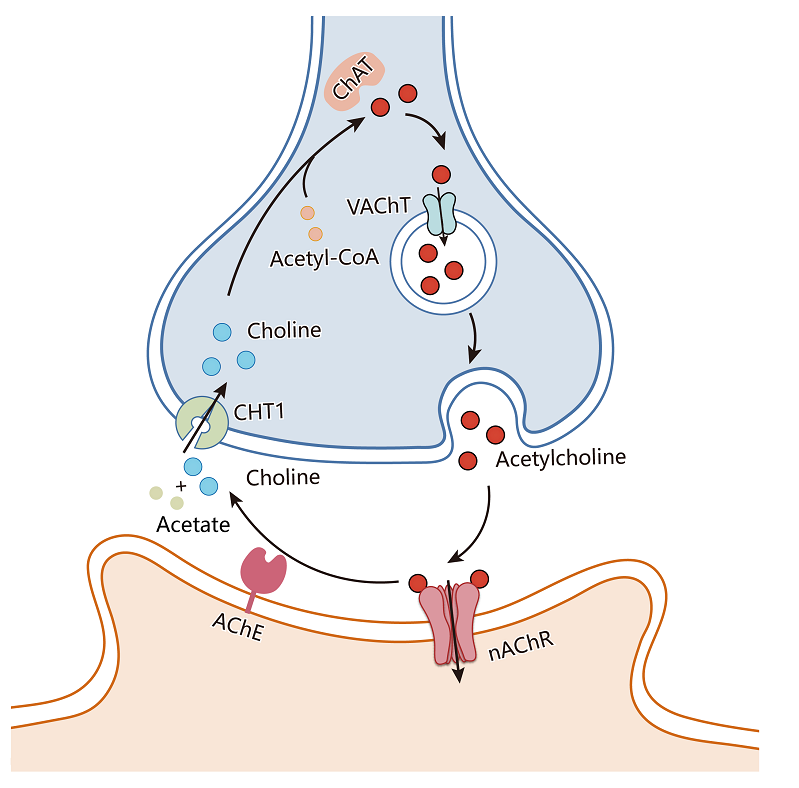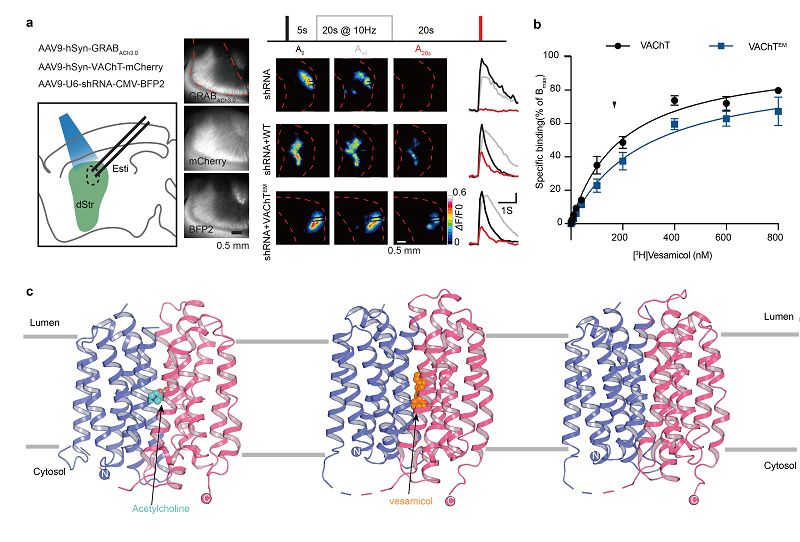Scientists Reveal Mechanisms of Binding and Antagonism in VAChT
The research team led by Prof. ZHAO Yan at the Institute of Biophysics, Chinese Academy of Sciences, used cryo-electron microscopy (cryo-EM) single-particle techniques to reconstruct high-resolution structures of the human vesicular acetylcholine transporter (VAChT) in apo state, acetylcholine (ACh)-bound state, and the inhibitor vesamicol-bound state.
The findings elucidate the mechanism of VAChT substrate recognition and proton-coupled transport, revealing how vesamicol interacts with VAChT and providing structural insights for designing highly efficient and selective radioactive ligands for targeting VAChT. This study was published on January 13, 2025, in Nature Structural & Molecular Biology.
VAChT is an crucial transporter that facilitates the uptake of acetylcholine into synaptic vesicles for its release. However, the molecular mechanism by which VAChT selectively transports acetylcholine into the vesicle has remained unclear.
The researchers determined the lumen-facing structures of VAChT at resolutions of 3.4 Å in apo state and 3.3 Å in ACh-bound state, identifying a unique hydrogen bond network compared to other proteins in the same family.
Using an acetylcholine sensor, GRABACh3.0, to assess the transport ability of VAChT and its mutants, the researchers discovered a coupling relationship between proton binding and substrate transport, providing important insights into the role of VAChT in acetylcholine transport, storage, and release.
Vesamicol, known for its selectivity and high affinity as a VAChT inhibitor, has been extensively studied. Here, researchers examined the high-resolution structure of the vesamicol-VAChT complex and found that vesamicol inhibits acetylcholine transport by preventing VAChT from transitioning from the lumen-facing conformation to the cytoplasm-facing conformation.
This study enhances the understanding of VAChT substrate recognition and its distinctive proton-coupled substrate transport mechanism, laying an important foundation for the development and optimization of drugs and tracers for neurodegenerative diseases.

Figure 1. Transmission process of neurotransmitters in cholinergic neurons
(Image by ZHAO Yan's group)

Figure 2. Functional characterization and architecture of human VAChT in apo state, acetylcholine-bound state, and the inhibitor vesamicol-bound state
(Image by ZHAO Yan's group)
Article link: https://www.nature.com/articles/s41594-024-01462-9
Contact: ZHAO yan
Institute of Biophysics, Chinese Academy of Sciences
Beijing 100101, China
E-mail: zhaoy@ibp.ac.cn
(Reported by Prof. ZHAO Yan's group)

